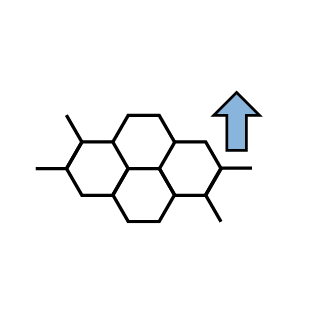From Sunburned grapes to quality wine: Practical Strategies
Is sunstroke threatening your wine?
Discover how Enartis can help you to manage the impact of sunburn on wine quality
What is sunburn?
The climate is changing and the berries color too!
Sunburn is a complex physiological disorder that leads to browning or necrosis of berry tissue at various stages. In general, during sunburn, photosynthetic pigments are degraded, the skin is damaged, tissues are compromised and spoilage in berries can lead to an increase of microorganisms.
Climate change plays an important role, as this phenomenon has been attributed mainly to the increased frequency and intensity of heat waves. Some grape varieties are more sensitive due to their skin thickness and composition.
Many factors can be blamed: excessive light on the vine, inappropriate canopy management, high air temperature and stress induced in the grapes; these aspects cause the production of secondary metabolites.
The accumulation of these pigments affects the quality of production, especially the aromatic profile, resulting in a higher oxidative character.
How Sunburn Alters Wine Characteristics
Sunburn on grapes not only reduces yield, but significantly affects the quality and sensory characteristics of the resulting wine.
When sunburn occurs in the vine, the winemaker must deal with many issues such as:
 |
|||
| High levels of polyphenols and protein in juice | Browning | Berry color and flavour | Microbial contamination |
| Unripe grapes | Green tannins | Low juice yield | pH and acidity imbalances |
It doesn’t sound like it has been an easy vintage for the winemaker, which is facing many challenges when managing the resulting wine from sunburned grapes.
Sunburn on grapes not only reduces yield, but significantly affects the quality and sensory characteristics of the resulting wine. Wines made from sunburned grapes tend to be darker, more bitter, and less aromatic than those made from healthy berries. High temperatures lead to a reduction in flavonoids, particularly anthocyanins, which are responsible for the vibrant color of grapes. This phenomenon is likely related to oxidative stress caused by heat. It further reduces the concentration of anthocyanins in both white and red grapes, leading to color loss and browning of wines. In white wines, sunburn also contributes to unwanted phenolic flavors, increased bitterness and a general loss of aroma.
Therefore, sunburn is a significant threat to wine quality, affecting both color and flavor, especially in red and white wines made with skin contact.
Now that fermentation is over, it’s time to roll up your sleeves and save what you can.
If you missed our strategy for managing drought conditions challenges during fermentation, don’t worry, Enartis has all the solutions to help you manage these issues after harvest.
Enartis’ solutions for managing the impact of sunburn on wine quality
White And Rosé Wine
| CHALLENGES | GOALS | ENARTIS SOLUTIONS |
| Oxidation | Remove oxidized compounds | CLARIL AF - selective fining agent made of pea protein, PVPP and bentonite to clean up and achieve brilliant color EnartisTan SLI - ellagic tannin to extend the wine shelf life |
| Microbial Spoilage | Control microbial development | Chitosan is the perfect effective alternative to SO2: EnartisStab MICRO M Better when used in combination with HIDEKI, blend of selected tannins with high antioxidant and bacteriostatic activity |
| Lack of Structure and aromas | Improve mouthfeel and full-body notes | Batonnage for 3-4 weeks with yeast derivates such as SURLÌ ONE |
| Unripe tannins | Remove astringency and bitterness | Pea protein removes polyphenols responsible of harshness and bitterness - PLANTIS AF-Q boosts this effect with the help of chitosan |
| Jammy Characters | Freshen wine aromas | EnartisTan FF - tannin extracted from lemon wood and white grape skins to freshen aroma and reduce overripe fruit notes |
| High protein content | Remove unstable proteins | CLARIL ZW selective fining agent to reduce the amount of bentonite need to achieve protein stability |
Red Wine
| CHALLENGES | GOALS | ENARTIS SOLUTIONS |
| Oxidation | Remove oxidized compounds | CLARIL AF - selective fining agent made of pea protein, PVPP and bentonite to clean up and brighten the color of wine |
| Microbial spoilage | Control microbial development | Achieve a successful Malolactic Fermentation: EnartisML SILVER After MLF, activated chitosan EnartisStab MICRO M and synergistic effects with HIDEKI, two perfect effective alternatives to SO2 |
| Lack of structure and aromas | Achieve mouthfeel, structure | Batonnage for 3-4 weeks with yeast derivates such as SURLÌ ONE |
| Unripe tannins | Perform fining to remove astringency | CLARIL QY - selective fining agent that balances the activity of yeast derivatives to provide body and structure with the action of chitosan to clean up the wine |
| Herbaceous notes | Organoleptic improvement | INCANTO NC CHERRY - toasted oak tannin, cherry tree wood tannin, yeast derivative rich in polysaccharide to improve fresh fruit notes. EnartisTan MAX NATURE - increase aromatic cleanliness and removes reductive and herbaceous character |
| Unstable color | Removing dryness and unstable color while respecting color compounds | CLARIL ZR - selective fining agent highly effective in provide clarity to wine extending the wine longevity MAXIGUM PLUS Gum Arabic obtained from Acacia Verek and mannoproteins |